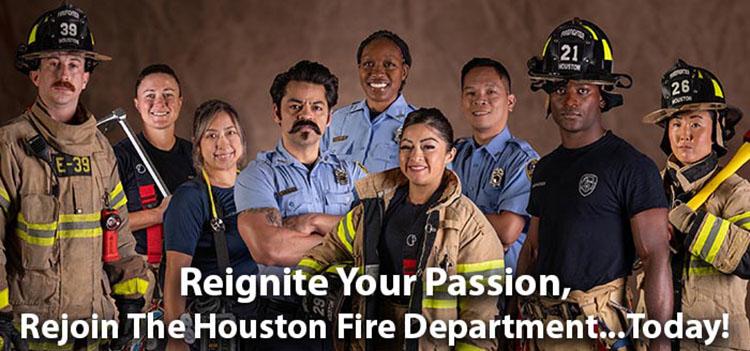Rapid Response to Tanker Fire Incident on US Highway 90
Houston firefighters acted promptly when a fuel tanker erupted in flames along US Highway 90, swiftly addressing the hazardous situation amid thick smoke that impaired visibility and disrupted traffic flow. Eyewitnesses described dense black smoke spreading across the highway, triggering an immediate dispatch of emergency units. Fire crews efficiently managed traffic control to safeguard motorists while containing the fire, preventing it from igniting nearby vegetation or vehicles. Their decisive intervention averted what could have escalated into a major hazardous materials crisis.
- Location: Mile Marker 45, US Highway 90
- Response Time: Approximately 7 minutes post-dispatch
- Resources Deployed: Fire engines, hazardous materials (hazmat) team, emergency medical services (EMS)
- Safety Measures: Temporary closure of adjacent lanes and nearby rest area
Authorities confirmed that no injuries occurred, and the fire was fully contained within an hour. The origin of the blaze remains under active investigation. Traffic was rerouted to alleviate congestion during emergency operations. This event highlights the vital importance of preparedness and rapid inter-agency coordination in effectively managing hazardous material emergencies on critical transportation corridors.
| Detail | Information |
|---|---|
| Vehicle Type | Fuel Tanker Truck |
| Duration of Fire | Approximately 60 minutes |
| Weather Conditions | Clear skies with mild wind |
| Public Advisory | Avoid US Highway 90 during emergency response |
Obstacles Encountered During Firefighting Operations
Firefighting teams faced several significant hurdles while combating the intense blaze consuming the tanker. A primary difficulty was navigating through heavy traffic congestion on US Highway 90, which delayed the arrival of emergency vehicles to the exact fire location. Additionally, fluctuating wind gusts heightened the risk of the fire spreading to adjacent vehicles and roadside vegetation, compelling crews to continuously adjust their containment tactics.
Complications also arose from the hazardous nature of the tanker’s cargo, requiring firefighters to exercise extreme caution to prevent explosions. Specialized protective equipment and foam-based fire suppressants were essential to safely manage the fuel fire. Coordination among multiple agencies was critical but occasionally hindered by communication challenges. Key response difficulties included:
- Traffic Congestion: Limited emergency vehicle access.
- Wind Conditions: Increased fire spread potential.
- Hazardous Materials: Risk of chemical exposure and explosion.
- Resource Constraints: Finite foam and protective gear availability.
- Inter-agency Communication: Occasional coordination delays.
| Challenge | Effect on Response |
|---|---|
| Traffic Bottlenecks | Delayed firefighting unit arrival |
| Wind Gusts | Amplified fire intensity and spread |
| Chemical Hazards | Explosion and exposure risks |
| Limited Resources | Restricted foam and gear supplies |
| Communication Issues | Slowed inter-agency coordination |
Traffic Disruptions and Community Safety Protocols
To mitigate the impact on traffic and ensure public safety, emergency teams implemented extensive traffic management measures along US Highway 90. Several lanes were closed for multiple hours, causing notable delays and necessitating detours through alternate routes. The Houston Police Department collaborated closely with fire crews to establish a secure perimeter around the incident site, facilitating safe firefighting operations.
Protective actions taken to shield residents and travelers included:
- Evacuation notices issued for households within a one-mile radius of the fire.
- Creation of emergency zones restricting public access near the blaze.
- Deployment of hazmat specialists to monitor air quality and contain hazardous substances.
- Real-time public updates disseminated via local news outlets and social media platforms.
| Safety Protocol | Objective |
|---|---|
| Lane Closures | Restrict civilian access near fire zone |
| Evacuation Orders | Protect public from explosion hazards |
| Hazmat Surveillance | Detect and control toxic emissions |
| Information Sharing | Provide accurate, timely safety updates |
Strategies for Preventing and Effectively Managing Tanker Fires on Highways
Preventing tanker truck fires on highways demands strict compliance with safety standards and proactive efforts from both drivers and emergency personnel. Routine maintenance and comprehensive inspections of tanker vehicles are essential to detect and rectify mechanical issues that could trigger fires. Furthermore, drivers transporting hazardous materials should receive specialized training in safe handling and emergency response protocols. Public education campaigns emphasizing cautious driving around hazardous cargo vehicles and maintaining safe distances can also significantly reduce fire risks on busy roadways.
In the event of a tanker fire, a rapid and well-coordinated emergency response is crucial to limit damage and protect lives. Firefighters should employ foam-based suppression agents specifically formulated for fuel fires and approach the blaze from uphill and upwind positions to minimize exposure to toxic smoke. Seamless communication among law enforcement, fire departments, and medical teams is vital to facilitate efficient evacuations and containment efforts. The table below summarizes key firefighting tactics tailored for tanker fire scenarios:
| Procedure | Objective |
|---|---|
| Foam Application | Suppress fuel vapors and deprive fire of oxygen |
| Perimeter Establishment | Ensure safety of civilians and responders |
| Upwind Approach | Reduce inhalation of hazardous fumes |
| Continuous Communication | Coordinate response efforts and public safety updates |
Conclusion
As firefighting teams continue to manage the tanker fire on US Highway 90, officials urge motorists to heed detour instructions and avoid the affected area to ensure safety and facilitate emergency operations. Investigations into the fire’s cause are ongoing, with no injuries reported at this time. Further updates will be shared as new information emerges.




